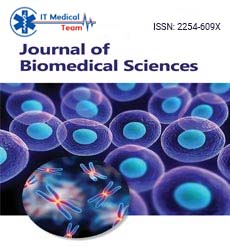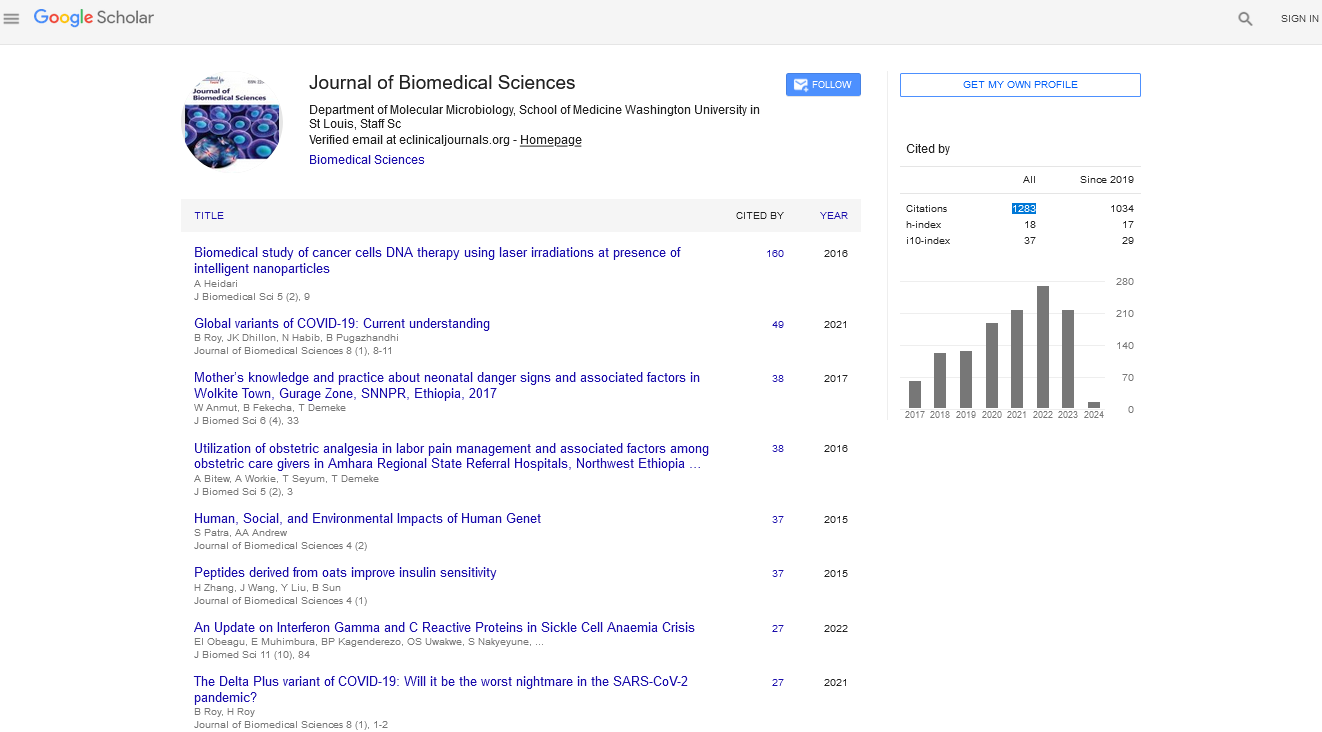Perspective - (2024) Volume 13, Issue 6
Bioinformatics and Computational Biology in Drug Discovery
Fernando Simon*
Department of Pharmacology and Biomedical Sciences, University of Barcelona, Barcelona, Spain
*Correspondence:
Fernando Simon, Department of Pharmacology and Biomedical Sciences, University of Barcelona, Barcelona,
Spain,
Email:
Received: 12-Nov-2024, Manuscript No. IPJBS-24-15314;
Editor assigned: 15-Nov-2024, Pre QC No. IPJBS-24-15314 (PQ);
Reviewed: 29-Nov-2024, QC No. IPJBS-24-15314;
Revised: 10-Dec-2024, Manuscript No. IPJBS-24-15314 (R);
Published:
17-Dec-2024
Introduction
Bioinformatics and computational biology have transformed
drug discovery, bringing computational techniques to the
forefront of pharmaceutical research. Through data analysis,
modeling, and simulation, these fields enhance understanding of
molecular interactions, identify promising drug candidates, and
optimize lead compounds, accelerating the drug development
process. By leveraging bioinformatics tools, researchers are able
to make sense of vast amounts of biological data, uncover novel
targets, and design drugs with greater precision and efficiency.
Description
Introduction to bioinformatics and computational
biology
Bioinformatics and computational biology are closely related
disciplines. Bioinformatics primarily involves collecting, storing,
and analyzing biological data, with a focus on molecular and
genetic information. Computational biology, on the other hand,
applies mathematical models, algorithms, and computational
simulations to understand complex biological systems and
processes. Together, these fields contribute a data-driven
approach to drug discovery, allowing scientists to understand
diseases at a molecular level and explore drug-target
interactions before moving to clinical testing.
Target identification and validation
The first step in drug discovery is identifying a biological target
typically a protein, gene, or pathway associated with a disease.
Bioinformatics tools help in mining genomic, proteomic, and
transcriptomic data to pinpoint molecular targets. This process
involves comparing healthy and diseased states to identify
molecules or pathways uniquely involved in the disease process.
Using high-throughput sequencing data, researchers can
identify genes and proteins involved in specific diseases, offering
insights into their potential as therapeutic targets. For instance,
bioinformatics algorithms can analyze large datasets from
sources such as the human genome project or The Cancer
Genome Atlas (TCGA) to find mutations, gene expressions, or
biomarkers linked to disease. Once a target is identified,
computational biology methods like molecular docking and molecular dynamics simulations validate its druggability by
evaluating how well potential compounds might bind to the
target.
Structure-based drug design
Structure-Based Drug Design (SBDD) relies heavily on
understanding the 3D structure of target proteins. Techniques
like X-ray crystallography, Nuclear Magnetic Resonance (NMR)
spectroscopy, and cryo-electron microscopy provide structural
data, which is then processed through computational tools to
study potential binding sites.
In SBDD, computational biology tools like molecular docking
algorithms predict how a drug molecule will interact with a
target protein. Docking algorithms simulate binding interactions,
allowing researchers to assess how well a compound fits into the
active site of a target protein. High-throughput docking can
screen thousands of compounds, ranking them by their binding
affinity to identify the most promising candidates. Additionally,
Molecular Dynamics (MD) simulations provide insights into the
stability and flexibility of the drug-target complex, offering
crucial information for refining drug candidates.
Virtual screening and high-throughput screening
Virtual screening is a cost-effective alternative to traditional
High-Throughput Screening (HTS), which tests thousands of
compounds in wet labs. In virtual screening, bioinformatics
databases store chemical libraries containing millions of
compounds. Computational algorithms then rapidly analyze
these libraries to identify compounds likely to interact with a
given target.
Ligand-based and structure-based screening are two main
approaches in virtual screening. Ligand-based screening
compares new compounds to known drugs with similar
molecular features, whereas structure-based screening focuses
on compounds that fit a specific target structure. Through virtual
screening, researchers can prioritize compounds for
experimental testing, accelerating the identification of lead
molecules while minimizing costs.
Computational methods in lead optimization
Once potential leads are identified, the process of lead
optimization begins. Lead optimization aims to refine promising
compounds, improving their potency, selectivity, and
pharmacokinetics. Computational biology plays a crucial role in
this stage by predicting how chemical modifications affect a
compound’s efficacy and safety.
Quantitative Structure Activity Relationship (QSAR) modeling
is a widely used approach in lead optimization. QSAR models use
statistical techniques to analyze relationships between a
compound’s chemical structure and its biological activity. By
predicting a compound’s behavior, QSAR models guide
modifications that enhance therapeutic properties. Moreover,
molecular simulations help in visualizing how small changes in
molecular structure impact interactions with the target,
providing valuable insights into optimizing drug candidates for
specific targets.
Machine learning and artificial intelligence in drug
discovery
Machine Learning (ML) and Artificial Intelligence (AI) are
enhancing bioinformatics and computational biology by
automating processes and improving prediction accuracy. ML
algorithms analyze extensive datasets from drug trials, clinical studies, and patient records to uncover relationships between
variables, enabling more accurate predictions.
Deep learning algorithms, particularly Convolutional Neural
Networks (CNNs), have shown remarkable success in image
analysis, such as identifying disease markers in medical images.
These models also assist in drug discovery by learning complex
molecular features and predicting binding affinities with high
accuracy. Reinforcement learning, another AI technique,
optimizes drug designs by iteratively improving predictions
based on feedback from previous simulations. As AI becomes
more sophisticated, it enables researchers to develop more
efficient, accurate, and predictive models for drug discovery.
Conclusion
Bioinformatics and computational biology have revolutionized
drug discovery, providing powerful tools for identifying,
optimizing, and testing potential therapies. By integrating large
datasets, predictive modeling, and AI algorithms, these fields
streamline the drug development process and enhance the
precision of modern medicine. While challenges remain,
particularly regarding data integration and model
interpretability, the future of computational drug discovery is
bright, offering new possibilities for treating complex diseases
and advancing personalized healthcare.
Citation: Simon F (2024) Bioinformatics and Computational Biology in Drug Discovery. J Biomed Sci Vol:13 No:6





